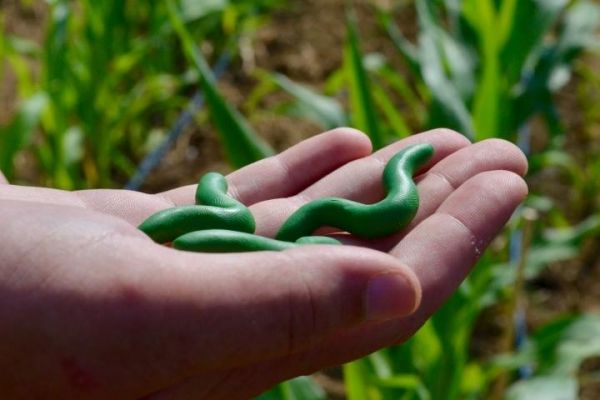When plants are in distress or being fed on by insects, they have been known to send out sensory volatile cues that alert organisms in the area — such as birds — that they are in need of help. While research has shown that this occurs in ecosystems such as forests, until now, this phenomenon has never been demonstrated in an agricultural setting.
Researchers at the University of Delaware have recently found that agricultural plants also send out these signals when under duress from insects, opening new potential avenues for growers to defend their crops while at the same time providing a much-needed food source for birds.
Ivan Hiltpold and Greg Shriver led the research at UD and used an unorthodox method to create their ‘larvae’ for the study: a little bit of Play-Doh and orange colored pins.
Using a field plot of maize on UD’s Newark farm, the researchers attached dispensers using a synthetic odor blend that replicated the volatiles—odor cues given off by plants to indicate they are being attacked such as the smell of freshly cut grass—attached to corn stalks. They also used dispensers using only an organic solvent as a control measure.
Read more at University of Delaware
Image: Ivan Hiltpold holds Play-Doh (plasticine) caterpillars designed to monitor birds preying on insects in response to plants sending out chemical pleas for help. Plant scientists refer to the chemicals as plant volatiles. (Credit: Monica Moriak)


